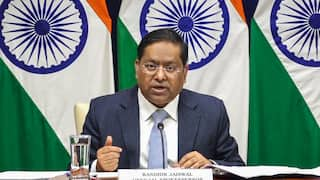Shrinking Current Account Gap Will Be A Blessing For The Rupee: Economists
The lower prints will provide a tailwind to the rupee given the twin deficits in India's Budget and current account make it more reliant on foreign inflows, according to economists

The forecast for India’s current account deficit has been lowered by economists due to favourable trade trends that are proving to be a blessing for the rupee, as reported by news agency Bloomberg.
According to the report, Barclays Plc expects the gap in current account, the broadest measure of trade in goods and services, to be 1.9 per cent of gross domestic product in the year starting April 1, down from a 2.3 per cent deficit it had estimated earlier. On the other hand, Citigroup cut its forecast even further to 1.4 per cent of GDP from 2.2 per cent previously, reflecting a steady drop in goods imports and strength in services exports.
According to the economists, the lower prints will provide a tailwind to the rupee, which is vulnerable to a selloff, given the twin deficits in India's Budget and current account make it more reliant on foreign inflows. A narrowing shortfall will also take the pressure off the RBI to sell foreign exchange from its reserves to stabilise the currency and check imported inflation.
Ashish Agrawal, head of foreign-exchange and emerging-market macro strategy research at Barclays in Singapore, said, “We are encouraged by the fact that the narrowing of the trade deficit has sustained and services exports remain strong,” while adding, “The lower current account deficit reduces dependence on financing flows and RBI’s dollar sales at the margin.”
That’s an added positive for the rupee, which along with Asian peers gained against the dollar after a dovish interest-rate hike by the Federal Reserve. However, India’s strong services exports print have caught economists by surprise.
Services trade surplus was strong at $14.6 billion in February, building on January’s revised surplus of $13.8 billion. Services exports nearly touched $30 billion in both January and February, an increase of about 40% on-year.
HSBC Holdings Plc attributes a part of this rise to Global Capability Centres set up by large multinational corporations. India is home to about 40 per cent of global GCCs, and this ratio is only expanding as they rise in scope, an HSBC report said.
Dhiraj Nim, an economist and forex strategist at Australia and New Zealand Banking Group, said, “Services trade surplus is truly a hero in India’s foreign trade story right now.” Nim is confident the trend will continue.






































